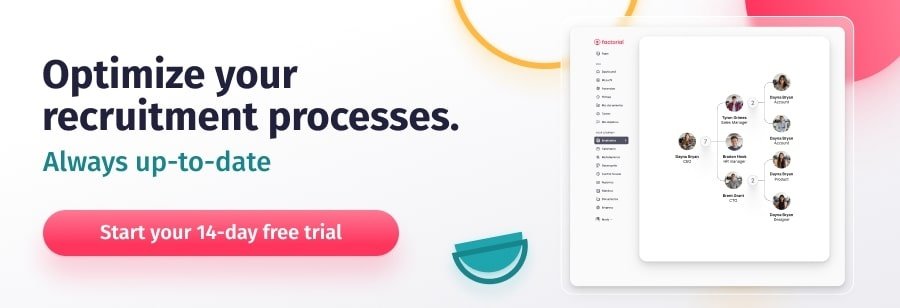To rehire or not to rehire, that is the question. Actually, that is a question that is more and more likely to cross the mind of today’s recruiting managers. According to Forbes, organizations are starting to prioritize the hiring process more now than ever before. There is a big push to find the right people for the right positions, and perhaps “boomerang employees” fit the bill.
So, what should you take into account when employees leave a company and then decide to come back? This guide is intended to help you make the best choices about rehiring “boomerang employees”.
- Boomerang Employee Definition
- Rehiring Former Employees Policy
- Rehiring Laid-off Employees
- Pros and Cons of Rehiring Former Employees
- Boomerang Employee Interview
- Best Tools for Recruiters and Hiring Managers
Boomerang Employee Definition
A boomerang employee is any individual who leaves a job for a period of time and then later returns to their position. Although it seems farfetched, employees who boomerang are becoming increasingly more common.
There are many plausible reasons for an employee to leave an organization, only to later return. So, Why do boomerang employees leave and come back? Here are some of the most common reasons:
- They leave to try something new, only to find out that it does not fulfill their expectations
- After some of working at a different company, they return to apply for a higher position
- They are looking for seasonal work
- It was necessary for them to move temporarily
- There were changes to the company’s remote working policy and they decided to return due to more flexible options
Developing a Policy for Rehiring Former Employees
Although boomerang employees may not require an in-depth onboarding process, steps should be taken during recruitment and selection to ensure that they are well-adjusted to their position.
The onboarding process for former employees is dependant on a number of factors, and rehiring decisions should be made on a case-by-case basis. Before deciding upon fitting company policies and procedures, Here are some general guidelines to help you put the optimal rehiring policy in place.
Look to the Employee’s Record
In order to ensure that you are bringing the correct talent back on board, it is important to separate good rehires from not-so-good ones. The best way to do this is by adopting specific criteria for filtering candidates. Here are some common examples of candidates that should be screened.
- The candidate left on bad terms
- They experienced conflict with the company culture
- There were problems with coworkers
- The candidate’s contract was terminated due to negative work habits or attitudes
Conduct a thorough Interview
If the employee’s records show that they would make a fitting rehire, it is a good idea to proceed with an interview. The interview process will give you a better understanding of the employee’s intentions and reasons for wanting to rejoin the team.
Often, boomerang workers leave, work elsewhere, and return to apply for a more senior position. In this situation, it is important to determine whether the new skills match those required for the role. Due to their experience, these former employees can bring valuable perspectives and insights to the company.
Perhaps the employee left for family or personal reasons. For instance, they needed time off to care for a sick relative or child. In these cases, it is important to show where your company stands and find ways to promote inclusive time off and hiring policies.
Determine if they are the best candidate for the position
As previously mentioned, there are an array of advantages that come along with hiring boomerang employees. However, note that the time and money saved during the onboarding process does not necessarily equate to building the best team in the long term.
In order to find the absolute best candidate for the position, it might be helpful to build a talent pool, target your audience in job descriptions, and use recruitment software to keep track of all promising applicants. In order to cast the widest net possible, many hiring managers are trying out different ideas to recruit virtual talent.
Rehiring Laid-off Employees
During crises, there may be times in which widespread layoffs take place. Finding the balance between understaffing and overstaffing can be difficult, and under changing and unexpected circumstances, it is especially challenging.
The pandemic and rapidly changing job market have caused both companies and individuals alike to reevaluate their priorities, objectives, and the overall motivation behind their work. While rehiring laid-off employees, they must know that their company supports them and considers them to be valuable team members.
Perhaps additional incentives will be necessary, especially those that give former employees a sense of job security. If left unconsidered, former employees may be more likely to search for work elsewhere.

Advantages and Disadvantages of Rehiring Former Employees
As with all hiring decisions, such as deciding whether or not to hire internal or external candidates, boomerang hires have their pros and cons. Here are some of the most outstanding and crucial points to consider while deciding to rehire.
Advantages of Rehiring Boomerang Hires
- Save on time, hiring, and training costs. Former employees do not require the same onboarding and training as new hires.
- While working elsewhere, the employee may have learned new skills that can benefit the company. Previous knowledge of the company in tandem with freshly gained expertise can be a great asset.
- There will be little to no adjustment to the company culture and job expectations, meaning that the candidate will feel completely comfortable and already able to stand on their two feet.
- Rehiring old employees sends the right message about your company to existing employees. It says that your company is worth returning to and can boost overall retention rates.
Disadvantages of Rehiring Former Employees
- Perhaps the employee was involuntarily terminated. The reasons for termination might make them poor candidates for rehire.
- If the candidate left, only to later return, it may point to future departures. Hiring managers need to assess the candidate’s level of organizational commitment.
- The employee may or may not have left due to conflicts in the company’s mission or culture. It is important to determine whether these elements will continue to pose a problem if the candidate were rehired.
Boomerang Employee Interview Questions
Every boomerang employee situation is unique. For this reason, interviews must help hiring managers understand the reasons and motivations of each candidate.
In order to gain insight, recruiters and hiring managers should thoroughly examine previous exit interviews and employee data to determine whether or not they would make a good candidate for rehire. Ask the following questions to former employees to find out if they will truly make a good rehire.
- What have you learned from your time away from the company?
- Why did you leave your position?
- Have you had problems with any coworker or company policy?
- Why are you interested in returning to work for this company?
Along with these questions, if a boomerang employee is applying to a different or higher-level position, it may be wise to add in questions that take place during a normal interview. Looking at other factors, such as the relevant experience, work ethic and, the design type of the candidate can help to decide whether or not he/she/they is cut out for the position.
Best Tools for Recruiters and Hiring Managers
People are an organization’s greatest asset. And to make the best decisions about recruiting team members, people teams need the best tools. At Factorial HR, we offer digital solutions that help people specialists with the entire hiring process, from beginning to end.
With an applicant tracking system, you can build a stellar careers page, create personalized application forms, and improve the overall candidate experience. All documents and information about potential team members are stored in one centralized location. Take your team to the next level with Factorial!


